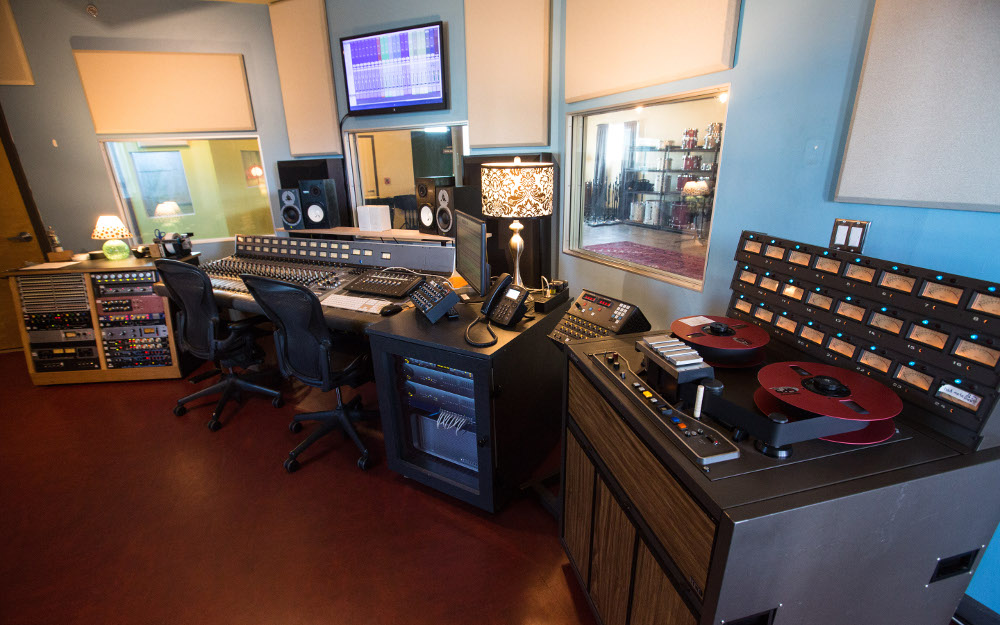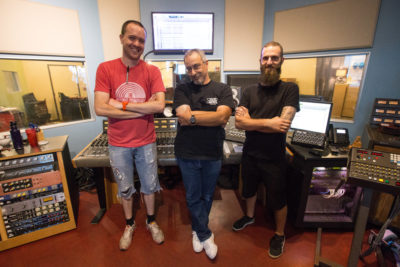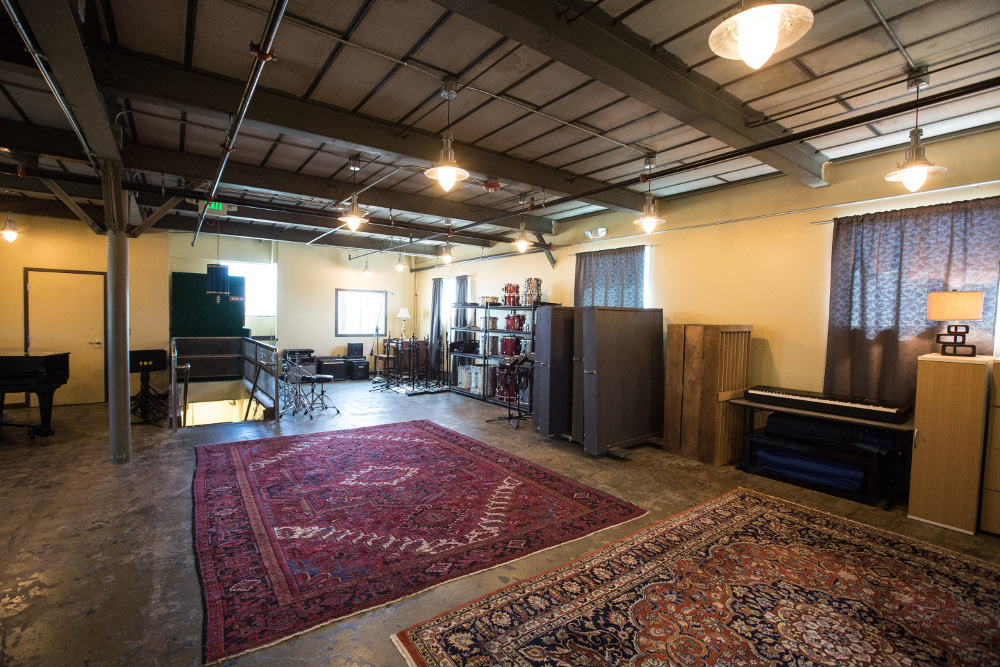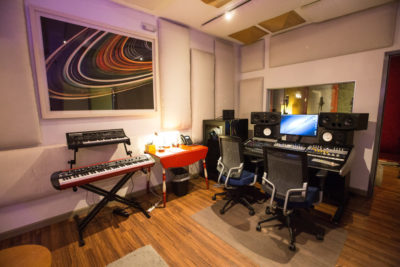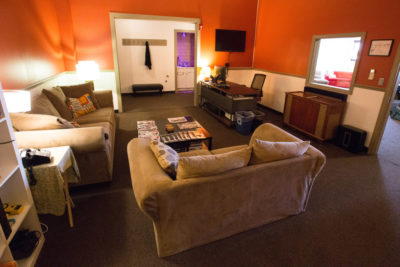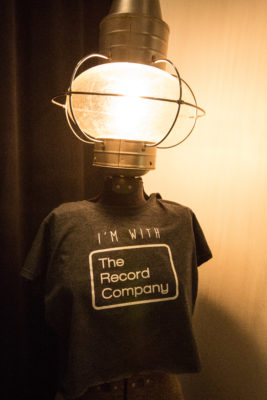Recording Studio Sweet Spot: The Record Co – Boston, MA
Ready for a rethink?
You just may go to a new M.O. after you check out The Record Co, which has forged its own path to recording and mixing thousands of sessions. Serving the Boston area, their key to progress has been their business model: This is a certified non-profit studio, one that found a way to serve artists and labels, and their community by looking beyond the bottom line.
How does forming a 501c3 organization pave the way for growth? The Record Co can show you how, as their structure not only greatly benefits artists, but also multitudes of freelance audio engineers and even other Boston-area recording studios.
Read this very different “Sweet Spot” for a surprising signal path to productivity – that recording business rethink may not be far behind.
Sweet Spot
Facility Name: The Record Co
Website: http://www.therecordco.org
Date of Birth: We hosted our first session in March of 2010
Location: Boston, MA
The Truth About Boston: Boston is a small but vibrant city. There’s a huge college population here and there’s also a huge tech-startup/innovation community here as well. Just like any city there is a very large and diverse music scene here but it’s not a focal point or a point of pride like you see in Nashville/NYC/Atlanta.
The biggest challenges we’re facing at the moment in Boston are a lack of reputation and infrastructure coupled with high real-estate costs, all of which lead a lot of musicians to leave the city in search of places with more perceived opportunities. Our mission as an organization is to create a sustainable and equitable music scene in Boston, and we hope to provide a support structure for musicians that allows for more opportunities and a better awareness throughout the city of all the awesome music being made here.
Clients/Credits: This is a tiny selection (we host 1,000 sessions a year…). We cater primarily to up-and-coming artists so if you haven’t heard of these folks you hopefully will in the next few years: Pile, Bent Knee, Dent, Dutch ReBelle, Creaturos, Grass Is Green, Latrell James, Honeysuckle, Walter Sickert & The Army of Broken Toys, Dazey and the Scouts, Wess Meets West, Milk, Livingston Taylor, Steve Smith, Madame Gandhi, Portugal. The Man, Nick Offerman (truly the most fun VO session ever)
Recorded Here:
Pile:
Bent Knee:
Berklee College of Music Indian Ensemble
Madame Gandhi:
Greylock:
Key Personnel:
Matt McArthur – Executive Director
Jesse Vengrove – Program Director
Maria Bartolotta – Studio Manager
NOT for Profit: Go up to any studio owner and ask them the following two questions and you’ll probably get similar responses:
1) “Are you making a large profit?” – “No”
2) “Why are you doing this then?” – “I love the work and I think it’s important/has cultural and/or artistic value.”
And there you have the most informal definition of a non-profit organization.
The Record Co. was founded in 2009 and, after a failed startup (first location flooded), we moved to our current facility in 2010. The non-profit angle came out of a realization that that no one really needs to own a studio, people just need access to one.
We wanted to create a space that was accessible to everyone, regardless of socioeconomic status, race, gender, and we wanted to create a space that was a part of the community and give back to the city. We charge our clients to use the facility like any other studio but the rates are subsidized by foundations/grants and individual donors who believe it’s important to cultivate a vibrant and creative scene in Boston.
We’ve found a way to allow artists to come in and use the facility at a price point that works for small/non-existent budgets while relying on other sources of funding to keep daily operations running. In 2017 we’re on track to host 1,000 sessions between the two rooms, so needless to say there’s a demand that we’re filling (while still seeing new studios pop up and legacy studios stay in business).
Freelance Engineers Wanted: TRC is a 100% freelance studio, which means that we don’t have any staff engineers; every artist that comes in brings their own engineer.
Because we cater to a lot of engineers who are just getting their start or haven’t worked in a studio outside of a college setting we host orientations every other week which consists of a conversation about expectations and best practices while working in a professional setting, how to avoid pit-falls that have the potential to kill the vibe for the players, and then a full technical walkthrough of the facility. We always have staff around to assist with any technical questions/issues and we do have a great crew of part-time assistants that are able to help out as well.
When clients need referrals we refer to our staff, who are all great engineers as well (but they still negotiate their own rates and get paid directly by the client as a freelancer). We also see a lot of engineers coming in from other studios around town (Q Division, Mad Oak, Zippah, Futura…) which we love. Really the only barrier to entry for an engineer is if you have no familiarity at all with Pro Tools and/or are just kinda a jerk.
The Studios: Back in the heyday of large studios there was a need to be in the studio from a technical standpoint (i.e. no one had a Neve and a Studer in their garage). Nowadays, with the ability to really record anywhere, we think the impetus is largely psychological (i.e. get out of your bedroom and go to work somewhere); we look at our space as a way to get a bunch of people all in the same room working towards the common goal of making a recording.
We have two studios, Studio A and Studio B (yeah, super creative!). Studio A is 2,500 sq/ft and includes a full kitchen and a lounge (with an ever-growing homage to the amazing art collection at Goodwill). We wanted it to feel like you’re walking into your friend’s living room, warm and homey. We kept a lot of the windows up there so there’s a lot of natural light, which really makes the room comfortable. There are two iso booths in there (one of which is a modular booth made by Eckel Industries that came from a local audiology lab that closed) and a large live room. You can get giant drum sounds up there (and we once squeezed a 45-person orchestra in there) or you can control/segment the room with gobos. It’s a large space but we did our best to keep sightlines open so no one feels disconnected.
Studio B is our smaller vocal/overdub room. This room is a little more chic than Studio A; no windows to the outside, color-changing LED lights, leather couch. It’s a small but spacious enough so it doesn’t ever feel crowded, and everyone always loves the homemade absorption panels covering the wall. Studio B definitely has a more traditional feel to it compared to A but it’s by no means sterile; it’s still a comfortable room to work in. There’s a lounge outside the studio so there’s lots of space to spread out. Studio B has it’s own private bathroom which sounds most excellent for re-amping.
System Highlights: We joke that we spend more money on lamps and rugs than gear as we really value vibe/comfort above all else. That being said, here’s the rundown:
Studio A has a 24-channel Sound Workshop Series 34 console. The console was installed in late 2016 and replaced an Avid C24. After we bought the console we also drove round-trip in 36-hours to Toronto to buy a second spare console for parts (and managed to fit it in the back of a Prius). It’s been fully recapped (thanks to our tech Joe Pires and a former intern Nicole Newman) and the internal Molex patch-bay was removed and everything was terminated to DB25’s so it easily integrated with our existing bays.
We have a 32×32 HDX rig with an Artist Mix controller as well as a 2” 16-track Sony/MCI JH-24 (with house reels of tape available) so clients can go analog, digital, or both. In addition to the console we have pre’s from Grace, ADM, Calrec, UA, and Focusrite. We have a small selection of compressors (prized possession is an 1176 that was donated to us broken; all it took was a multi meter and a $2 part to get it back up and running) and additional outboard gear (including some PCM 42’s, a PCM 60, and a GML 8200).
We received a lot of support from the fine folks over at Audio Technica when we first opened so we have a large selection of A-T mics. We’re huge fans – they sound great and we’ve only had to send out one or two mics for service in the 6 years we’ve had them. We also have the obligatory pair of 414EB’s and all the standard dynamics (although we only have five EV635a’s, which is quite possibly our favorite mic in the world, and we wish we had more). The full gear list is here.
Studio B is a simpler setup – 16×16 HDX rig and an Artist Mix and Artist Controller. Pre’s from UA, Grace, and Avalon, and a small variety of compressors (LA-4, Distressor, Chandler Germanium, and Elysia Xpressor). Prized possession in Studio B is the pair of Primetime II’s. In the booth we have a Wunder SM67, Brauner Valvet, and an AT 4060, along with some other standard dynamics/condensers. Full gear list is here.
We’ve had a lot of support from our great friends over at iZotope, Soundtoys, Slate, and Sonnox, so both rooms are outfitted with all of their plugins.
Other Distinguishing Characteristics: The thing we’re most proud of is the vibe. Clients always feel instantly comfortable when they walk into one of our rooms. We’ve worked really hard to keep the spaces from feeling sterile. We’re also known for the large live room that I mentioned above, great for huge drum sounds.
Community Collab: When we first opened up there was some pushback from the other studios in town about our rates – people thought we were trying to compete on pricing and undercutting their rates.
However, once we actually sat down with everyone and gave them insight on what we were trying to do we all got friendly pretty quickly. The room rate here is very low but, since we’re 100% freelance, if you’re bringing in a seasoned engineer then you’re probably paying very close to market rate for the day. On the flip side, if you bring in a first-semester engineering student then you’re probably below market. There are obvious advantages and disadvantages to both. We take a lot of sessions that other studios might not take as our freelance policy is so open and accessible (although we have seen other studios become more welcome to freelancers since we opened which we’re really happy about).
We also cater to up-and-coming artists; lots of our clients have never been in a studio setting before and just simply aren’t ready to work at Q Division. We wanted to provide a space for them to come and make a bunch of mistakes so by the time they actually have some good material and a budget they are prepared and know what to expect when moving to the larger studios around town. We regularly see other studios sending us clients that are just not ready for working in larger studios and would get more value/time working out the kinks in our place. We also see engineers from other studios bringing their clients here so they can stretch their budgets a bit (which keeps everyone busy and getting paid).
TRC has friends all over town at this point, and we really see ourselves as filling a niche in the market by providing a pathway for artists and engineers to develop and eventually be able to make educated choices when they are looking for a studio.
Creating Content: We launched the “Boston Sessions” program in 2016. “Boston Sessions Vol. 1: Beast” is a multi-genre comp featuring 13 brand new tracks from 13 Boston-based artists.
The goal for the program is to document what we think is some of the best music being made in Boston and have tangible proof that there’s cool stuff happening in the scene here when people come to us and ask why they should pay attention to Boston. We wanted the comp to be multi-genre because we wanted to highlight the diversity of the music scene and also promote music discovery (i.e. a Pile fan buys it for Pile but then discovers Ruby Rose Fox or a Michael Christmas fan discovers Animal Flag…). That being said, it is actually cohesive album despite the diversity.
TRC paid all of the artists to write a new track exclusively for the comp and we also covered all productions costs. We wanted artists to record wherever they felt most comfortable so three tracks were recorded at TRC and the rest were recorded at other studios around the city and elsewhere (including 1809 Studios, Sonelab, Mystic Valley Recording, and Mortal Music) and the record was mastered by Jonathan Wyner of M Works.
In total we paid 63 artists/engineers/producers to make the record, which we’re really proud of. We’ve sold around 1,200 units of vinyl/CD and have had over 50,000 streams, which for a first go-around we’re really excited about. We also just launched a large donated outdoor ad campaign around the city and on the trains called “Boston Music Is” which features pictures of artists from the comp. It’s great to see the city showing some love for the artists that make it a cool place to be.
The album is available for streaming on Bandcamp and Spotify and vinyl is in our web store.
What’s Next: There are no dedicated all-ages venues in Boston and, in an effort to provide more access to the scene and more options for musicians, we are planning on opening one.
We’re in the middle of a feasibility study right now that funded by a grant from the state of Massachusetts and should have a plan together by the end of the year. Small capacity venues are scarce in Boston (many have shut down in the past five years) and there needs to be a place where both up-and-coming artists can go to play shows and young music fans can get indoctrinated in the local scene. There’s no point to recorded music if there isn’t a fan base that’s eager to consume it.
The Studio and Beyond: Initially we thought our mission was just about providing access to an affordable recording studio, and that’s how we thought and operated for about four-and-a-half years. It was only in the last two years that we took a long look in the mirror and realized that without a developed and supported music scene there really is no point to having a recording studio.
If we started from scratch right now but kept the mentality that we currently have I don’t think we’d start with a studio — we’d probably start with the compilation and/or the venue as well as developing other resources to support artists. The studio worked out really well for us because of the location (1.5 miles down the street from Berklee College of music), our personal interests, and market we’re in (lots of talent, not a lot of resources), but I wouldn’t personally advocate for opening a money-pit (aka studio) unless there is a demonstrated need for it. The best first step is to take an accurate inventory of what’s missing in the city and start there.
It’s also important to just start doing the work, not to sit around and ideate about raising money what or the perfect program is. Business plans and charts and spreadsheets are awesome but people want to see tangible progress and that just means doing the work. It takes lots and lots of time and effort and will likely take years to become remotely sustainable, but if you love it (and we most certainly do) then it’s totally worthwhile.
— Jesse Vengrove, Program Director, The Record Co
Please note: When you buy products through links on this page, we may earn an affiliate commission.







